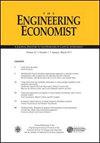信用风险对供应链现金牛鞭的影响
IF 1.2
4区 经济学
Q4 BUSINESS
引用次数: 2
摘要
摘要由于现金流对公司来说是一个关键问题,因此有效地操作现金流以降低流动性风险非常重要。然而,与牛鞭效应的研究相比,很少有研究分析供应链中现金流牛鞭的影响和原因。没有人考虑信贷风险对整个供应链从下游到上游的现金流牛鞭效应的影响。因此,本研究建立了一个数学模型来研究信用风险对现金流牛鞭的影响。为了实现这一点,它分析了每个成员的应收账款、应付账款和现金水平的可变性,以及三个财务绩效指标:应收账款周转率、应付账额周转率和现金转换周期。众所周知,牛鞭效应产生的过度库存水平会导致现金牛鞭效应,从而导致供应链成员出现流动性问题。然而,本研究的结果表明,考虑信贷风险会增加下游成员向上游成员的应收账款、应付账款和现金金额。此外,本研究表明,在考虑信用风险时,应收账款周转指数准确地说明了整个供应链中每个成员的现金牛鞭效应。本文章由计算机程序翻译,如有差异,请以英文原文为准。
The impact of credit risk on cash-bullwhip in supply chain
Abstract Because cash flow is a critical issue for companies, it is important to effectively operate cash flow to mitigate liquidity risks. However, compared with research on the bullwhip effect, few studies have analyzed the effects and causes of the cash-flow bullwhip in the supply chain. None has considered the influence of credit risk on the cash-flow bullwhip effect from downstream to upstream throughout the supply chain. Thus, this study develops a mathematical model to investigate the influence of credit risk on the cash-flow bullwhip. To achieve this, it analyzes the variability of each member’s account receivable, account payable, and cash level along with three financial performance measures: account receivable turnover, account payable turnover, and cash conversion cycle. The excessive inventory level created by the bullwhip effect is known to cause the cash-bullwhip effect, which leads to supply chain members experiencing liquidity problems. However, the results of this study demonstrate that a consideration of credit risk increases the amounts of account receivable, account payable, and cash from downstream members to upstream members. In addition, this study demonstrates that when considering the credit risk, the account receivable turnover index accurately illustrates the cash-bullwhip effect of each member throughout the supply chain.
求助全文
通过发布文献求助,成功后即可免费获取论文全文。
去求助
来源期刊

Engineering Economist
ENGINEERING, INDUSTRIAL-OPERATIONS RESEARCH & MANAGEMENT SCIENCE
CiteScore
2.00
自引率
0.00%
发文量
14
审稿时长
>12 weeks
期刊介绍:
The Engineering Economist is a refereed journal published jointly by the Engineering Economy Division of the American Society of Engineering Education (ASEE) and the Institute of Industrial and Systems Engineers (IISE). The journal publishes articles, case studies, surveys, and book and software reviews that represent original research, current practice, and teaching involving problems of capital investment.
The journal seeks submissions in a number of areas, including, but not limited to: capital investment analysis, financial risk management, cost estimation and accounting, cost of capital, design economics, economic decision analysis, engineering economy education, research and development, and the analysis of public policy when it is relevant to the economic investment decisions made by engineers and technology managers.
 求助内容:
求助内容: 应助结果提醒方式:
应助结果提醒方式:


